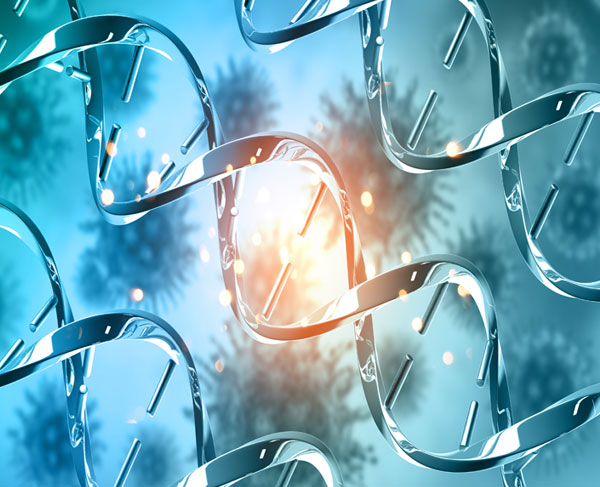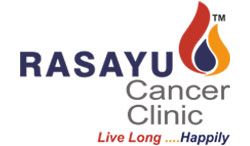Cancer Types
- Bladder Cancer
- Bone Cancer
- Breast Cancer
- Cervical Cancer
- Colorectal Cancer
- Endometrial Cancer
- Head & Neck Cancer
- Kidney Cancer
- Laryngeal Cancer
- Leukaemia
- Liver Cancer
- Lung Cancer
- Multiple Myeloma
- Nasopharyngeal Cancer
- Non-Hodgkin's Lymphoma
- Oesophagus Cancer
- Oral Cancer
- Ovarian Cancer
- Pancreatic Cancer
- Prostate Cancer
- Skin Cancer
- Stomach Cancer
- Testicular Cancer
- Thyroid Cancer
Opening Hours
- Monday - Saturday 10:00 am - 7.00 pm

Ovarian Cancer
- Ovaries are reproductive glands found in females.
- One ovary is on each side of the uterus in the pelvis. When cancer begins in the ovaries it is called as Ovarian cancer.
- Ovarian Cancer ranks 19 th in the overall prevalence of cancers and constitutes 1.6% of the total cancer patients affected every year.
- The death rate is about 1.9 % per year of the cancer patients and the 5 year survival rate is over 20%.
- The Ovaries are the main source of the female hormones estrogen and progesterone.
- Ovarian cancer causes more deaths than any other cancer of the female reproductive system.
- The ovaries are made up of 3 main kinds of cells. Each type of cell can develop into a different type of tumor :
– Epithelial cell
– Germ cell
– Stroma
Causes
- Obesity Obese women have a higher risk of developing Ovarian cancer.
- Age The risk of developing Ovarian cancer increases with age. Ovarian cancer is rare in women younger than 40. Most Ovarian cancers develop after menopause. Half of all Ovarian cancers are found in the older age.
- History of hormone replacement therapy (HRT) Studies have shown that the use of estrogen alone as menopausal hormone therapy can increase risk for developing Ovarian cancer.
- Reproductive history Women who have been pregnant and carried it to term before age 26 have a lower risk of Ovarian cancer than women who have not. Women who have their first full-term pregnancy after age 35 or who never carried a pregnancy to term have a higher risk of Ovarian cancer.
Carcinogenic agents with sufficient evidence in humans
- Asbestos (all forms)
- Estrogen menopausal therapy
- Tobacco smoking
- A strong family history of Breast, Colorectal or Ovarian cancer.
- The person who had Breast cancer, or who have tested positive for inherited mutations in BRCA2 genes are at increased risk.
- Studies indicate that preventive surgery to remove the ovaries and fallopian tubes in these women can decrease the risk of Ovarian cancer.
Carcinogenic agents with limited evidence
- Talc-based body powder
- X-radiation, gamma-radiation
- These include pelvic inflammatory disease and a genetic condition called hereditary nonpolyposis colorectal cancer (also called Lynch syndrome), may indicate an increased risk for Ovarian cancer.
- Tobacco smoking increases risk of mucinous Ovarian cancer (cancer that begins in the outer lining of the ovary).
- Birth Control
Women who have used oral contraceptives (also known as birth control pills or the pill) have a lower risk of Ovarian cancer. - Fertility Drugs
In some studies, researchers have found that using the fertility drug clomiphene citrate for longer than one year may increase the risk of developing Ovarian tumors. - Androgens
Androgens are male hormones. Danazol, a drug that increases androgen levels, was linked to an increased risk of ovarian cancer in a small study. In a larger study, this link was not confirmed, but women who took androgens were found to have a higher risk of ovarian cancer. - Oestrogen Therapy and Hormone Therapy
Some recent studies suggest women using oestrogen after menopause have an increased risk of developing ovarian cancer. The risk seems to be higher in women taking estrogen alone (without progesterone) for many years (at least 5 or 10). The increased risk is less certain for women taking both estrogen and progesterone. - Breastfeeding may lower the risk even further
Signs and Symptoms
- Bloating.
- Pelvic or abdominal pain.
- Trouble eating or feeling full quickly.
- Urinary symptoms such as urgency (always feeling like you have to go) or frequency (having to go often).
- Fatigue.
- Upset stomach.
- Back pain.
- Pain during sex.
- Constipation.
- Menstrual changes.
- Abdominal swelling with weight loss etc.
Investigations / Screening
- Physical examination and history.
- Biopsy – In patients with Ascites (fluid build-up inside the abdomen), samples of the fluid can also be used to diagnose the cancer.
- PET scan / MRI / CT Scan – To look for any pelvic mass or abnormal structure, PET Scan is useful in detecting spread of cancer to any other organs in the body.
- Biomarkers investigations
– Raised tumors markers are indicative of presence of cancer in the body.
– CA-125 test – The presence of a solid pelvic mass or a multiloculated cystic mass with CA 125 over 100 U/ml is most likely to indicate an Ovarian cancer. - Other Blood Investigation Reports
– Human Chorionic Gonadotropin (HCG) / Alpha-Fetoprotein (AFP), and/or Lactate dehydrogenase (LDH).
– In women under age 35 years should also be measured on these factors as these can be raised in Malignant Teratomas and Germ Cell Tumors.
Treatment
- To plan personalised treatment for each individual patient as every individual is different even if they have the same type of cancer.
- To improve health related quality of life (QOL) in all types and stages of cancer patients.
- To plan for partial or total regression of tumour depending on the nature of tumors.
- To increase overall survival (OS) of patients.
- To increase disease free survival (DFS) where complete resection of tumour is achieved.
- To provide a treatment option to patients who are refractory to conventional treatments like chemotherapy / radiotherapy / immunotherapy etc.
- To reduce the rate of growth of the tumor in recurrent and advanced staged cases.
- To increase progression free survival in advance cases.
- To reduce impact of symptoms related to progression of disease.
- To improve confidence of patients.
- To provide palliative support in end-of- life cancer cases.
- To add happiness and extension of life to cancer patients.
- To compliment other therapies like chemotherapy, radiotherapy in a synergistic way.
- To reduce severity or adverse effects of other conventional treatment. This reduces incidence and frequency of hospitalization.
- It is pertinent to note that Rasayu Cancer Clinic does not claim or blame anything while communicating any aspect to cancer patients.
- Rasayu Cancer Clinic focuses on Ayurveda fundamental based therapies.
- Rasayu Cancer Clinic believes in continuous improvement in service and science.
- Rasayu Cancer Clinic always advocates patient centric approach which leads to long and happy life of cancer patients.
- Every patient has a right to choose the therapy.
- Rasayu Cancer Clinic never imposes Rasayana therapy on patients but helps them to take the right decision, hence making patients/ relatives well aware about the disease and possible outcomes along with its risk benefit and cost benefit ratios.
- Rasayu Cancer Clinic is well connected with global updates in cancer care and therapies, through advisors and collaborations with national and international institutes.
Surgery
- The main principle of treatment is to remove all possible visible Tumour. This usually involves performing a hysterectomy, BSO and omentectomy.
- Problems After Surgery – Click Here
Chemotherapy
- Chemotherapy treatment uses medicine to weaken and destroy cancer cells at the original cancer site and any cancer cells that may have spread to other parts of the body.
- While destroying cancer cells, it destroys fast dividing normal cells, which further creates multiple side effects.
- Side effects of chemotherapy in ovarian cancer – Click Here
- Side effects of Chemotherapy – Click Here
- Adverse drug reactions (ADRs) of Chemotherapy – Click Here
Radiation Therapy
- It is a treatment with high energy rays or particle that kills cancer cells also termed as External beam radiation (Radiation given by machine from outside of body).
- It may involve External beam radiation or Brachytherapy.
- It may be used to direct treatment at a solitary pelvic recurrence or to treat secondaries.
- Side effects of radiotherapy in Ovarian Cancer – Click Here
Targeted Therapy
- Targeted therapy uses monoclonal antibodies in medicine that is injected into the body so these antibodies can attach to cancer cells and destroy them.
- It attacks the cancer specific genes, proteins, or the tissue environment that contributes to cancer growth and survival.
- This type of treatment blocks the growth and spread of cancer cells while limiting damage to healthy cells.
- Targeted Therapy Side Effects – Click Here
Rasayu Cancer Clinic Rasayan Treatment Protocol – To know more please click here
Rasayu Therapy is recommended for those :
- Who voluntarily opted for this treatment as their first choice.
- Who are disenchanted with the past treatments.
- Who do not see any other options of treatments.
- Who are looking for personalized treatment plan.
- Who desire a convenient home-based oral therapy which is easy to consume.
- Who are susceptible to acquire hospital borne infections/ complications, hence not willing to be hospitalised.
- Who are looking for favourable risk benefit ratio.
- Who desire to improve Quality Of Life benchmarks based on global standards and monitored regularly.
- Who are involved in decision making for choice of treatment.
- Who are willing to be involved in monitoring the efficacy of Rasayana Therapy.
- Who believe in the transparency of the process by conducting regular investigations by biochemical parameters/ hi tech imaging techniques like PET scan etc.
- Who are equally sensitive to the patient, the care givers and the family.
- Which can be taken with other treatments including Chemotherapy / Radiotherapy.
Disclaimer : This Website contains certain links such as You Tube links, research paper links / website links / audio visuals / internet information already available in public domain. The information contained in the audio visuals is meant for use by qualified Medical Professionals. The content of the links etc has been made available for informational and educational purposes only. Rasayu Cancer Clinic and its associates do not make any warranties with respect to the accuracy, applicability, fitness, or the completeness of the content of such links etc. The information contained in such links represents the views and opinions of the original creator of such links and are not views endorsed by the Rasayu fraternity.


